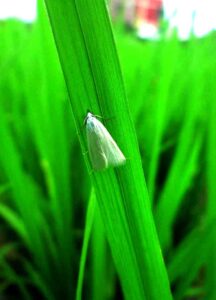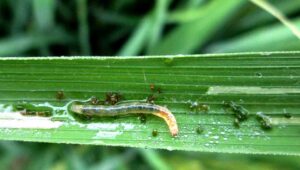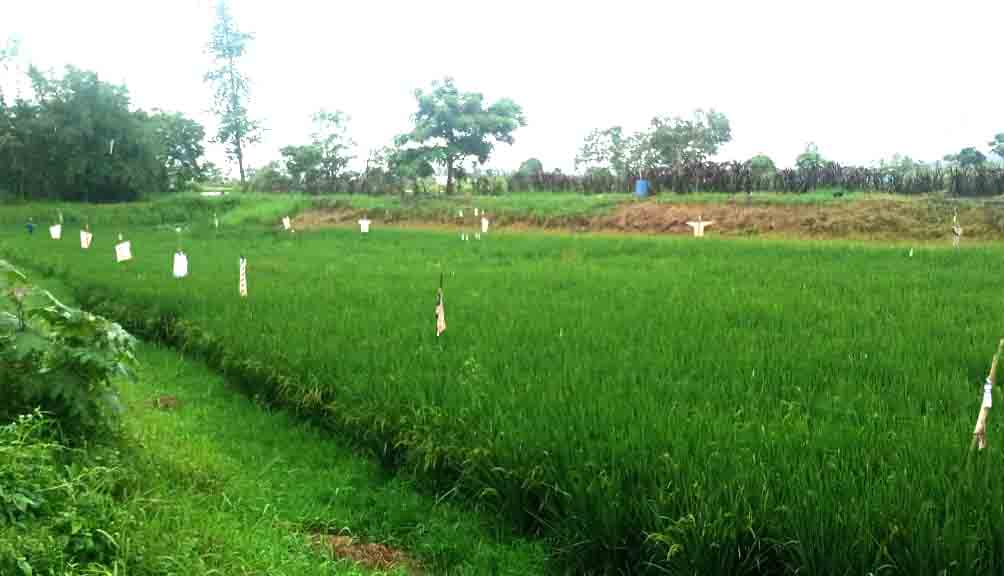According to a scientific review published on June 2, 2021 on the Impact on Plant Pests conducted by Professor Maria Lodovica Gullino, University of Turin, Italy and ten co-authors from around the world hosted by Food and Agriculture Organisation (FAO) of United Nations found that the impact of climate change is one of the greatest challenges that plant health community is facing. FOA estimates that annually up to 40 percent of global crop production is lost to pests. Each year, plant diseases cost the global economy over $220 billion and invasive insects at least $70 billion. The scientific review also found that climate change will increase the risk of pests spreading in agricultural and forestry ecosystems, especially in cooler Arctic, bored temperature and subtropical regions.

Many scientific studies have proved that climate change and extreme events can have significant impacts on pests by influencing their distribution and life cycle and hence their pest status and the associated level of pest risk. Globally, rising temperature, extreme weather events and altered rainfalls patterns are predicted effects of climate change on the environment. Extreme events can damage crops and natural vegetation. These disturbances, in addition to the changing atmospheric conditions, provide ideal opportunities for invasive species to enter and spread. Different populations of pest species can respond in different ways to climate change, with the range of some shifting, some contracting and some expanding and others disappearing. Although overall agricultural productivity has increased, climate change has slowed this growth over the past 50 years. Globally, related negative impacts have mainly been in mid-and low-latitude regions, but positive impacts have occurred in some high latitude regions (IPCC, 2022).
In an exclusive interview with Professor Khumukcham Ibohal Singh, Department of Entomology, College of Agriculture, Central Agricultural University (CAU), Iroishemba in Manipur narrated that with human existence there lies the existence of food. Foods are supplied mainly by plants such as rice plant, vegetables and fruits etc. While planting paddy, vegetables, fruits etc. there emerge pests and diseases. In order to protect the insect pests, many plants such as Urikshibi, Naosheklei, Nonggalei, Laibakngou etc. were grown naturally in and around the fields to meet the human needs which act as pest manager (repellent) and as edible one. There are also other beneficial and bio-agent insects such as dragon fly, lady bird etc. which eat the insects thus helping in controlling the pests. This natural pest management system has failed with the emergence of Green Revolution.
He also mentioned that after the emergence of Green Revolution in 1960 in India, there arise the need to plant rice, wheat and other crops of high yielding varieties which requires many nutrients such as urea, super and potash. These three chemical fertilizers produced nitrogen, phosphate and potassium. Among these, urea is the most dangerous as ten kilograms of urea in the soil can release two kilograms of Carbon dioxide which is one of the main component for climate change. The use of agricultural inputs such as chemical pesticides (weedicides or insecticides) has killed all the beneficial insects.

Citing example of Bhopal gas tragedy (1984) and Endosulfan tragedy in Kerala, Professor Ibohal said that many people have lost their lives, many become handicapped because of all these hazardous chemicals. In Manipur also many people were hospitalized after consuming Hawaijar (fermented Soyabean) where the Soyabean seeds are mixed with pesticides. Moreover gases such as methane, nitrous oxide, carbon dioxide produced by pesticides manufacturing industries and usage of these pesticides are also major contributing factor for climate change. As we have challenged the nature, it results in floods, droughts, alter rainfall patterns etc. due to climate change, he added. Many beneficial organisms such as earthworm, insects, bacteria (rhizobium, azotobacter, nitrosomonas, nitrobacter etc.) which were once abundantly found under the soil are almost extinct these days as a result of using chemical pesticides and fertilizers in the fields.
He narrated that using one kilogram of Clyphosate which is a very popular herbicide can released 31.39 kilogram of carbon dioxide. Around 65 countries of the world have banned using of this herbicide. India is also in the pipeline to ban it. With the change in temperature, rainfall and humidity due to climate change, the status of pests have also changed. In this regard, Professor Ibohal said that cabbage butterfly which is a pest for cabbage is now extinct because of unfavorable temperature and humidity. Diamond back moths have replaced cabbage butterflies. Diamond back moths are more dangerous than cabbage butterflies. He opined that dying or drying of Tree-bean (Yongchak) in Manipur is due to infestation of Asian longhorned beetle which is now invasive. Again in case of rice, Blast has been replaced by Bacterial Leaf Blight. The rise in temperature and humidity due to climate change has significantly contributed to the introduction and spread of invasive species. Grasshopper which lay eggs in the soil making the soil fertility is almost extinct due to excessive use of urea making the soil very hard. Gall Midge which is an insect pest that causes serious damage, especially in rice crops is almost extinct. Even in fruit crops, many invasive pests have caused significant damage worldwide and their impact is increasing due to climate change and global trade. Honey bees which play a crucial role in agriculture through pollination is drastically declining its population due to deforestation and use of chemical insecticides. They are responsible for pollinating about 70 percent of the World’s major food crops. If we are not able to control it timely, it will again impact to climate change, he added.
Professor Ibohal further expressed that the use of chemicals in agriculture especially fertilizers, herbicides and pesticides etc. has significant impacts on soil health, environment and human health. The chemical residue are accumulated in soil, crops, fruits, vegetables, water bodies, animal products which will have short-term and long term effects on human health. Mentioning about Dichloro-Diphenyl-Trichloroethane (DDT) which is a synthetic insecticide that was once widely used to control mosquitoes and agricultural pests, Professor Ibohal expressed that even though DDT is banned, it is still used in agricultural purposes for controlling pests in some places of Manipur. Keeping in view all the negative impacts of using chemicals in agriculture for the 60 years, he appeals all the farmers to practice organic farming or natural farming methods free from any toxic to human and environment. For this method of farming, farmers can use naturally available product free from chemicals and eco-friendly to produce safer and healthier food for a sustainable agriculture.
Preserving plant health is fundamental to achieve the sustainable development goals. Sustaining plant health is an integral part for more efficient, inclusive, resilient and sustainable agro-food system. Indigenous peoples have a long history of adapting to challenges in changing environment and their resilience strategies can help enrich and strengthen other adaptation efforts. Indigenous people’s knowledge provides a basic for the successful understanding of responses to and governance, of climate change risks. Integrating the indigenous people’s knowledge and application of many pest management measures free from chemicals will be the only solution for a better impact on human health, soil fertility and ecological balance.
(The article is filed under the 5th State Level Media Fellowship Programme on Climate Change under the sponsorship of Directorate of Environment and Climate Change, Government of Manipur.)












